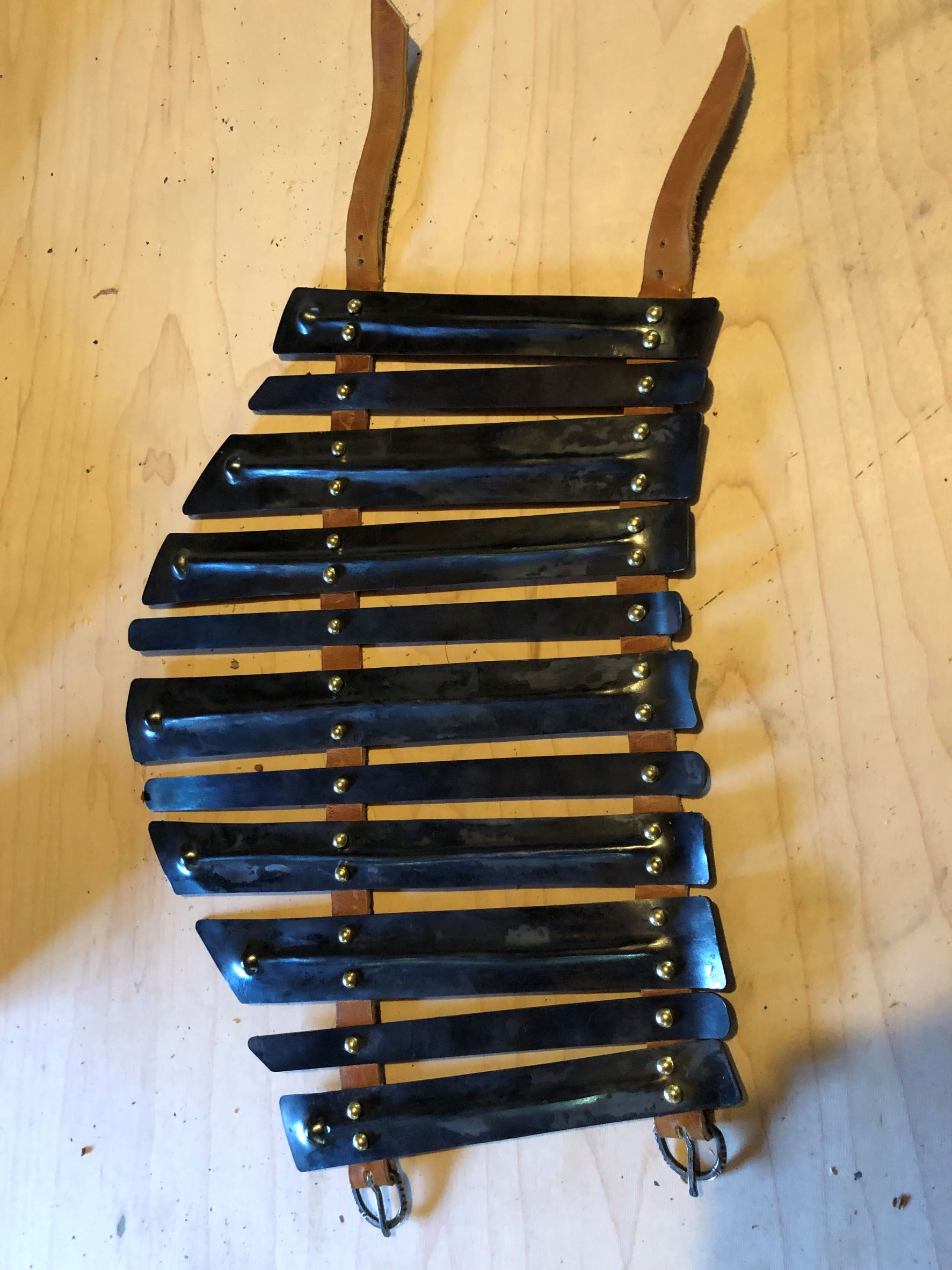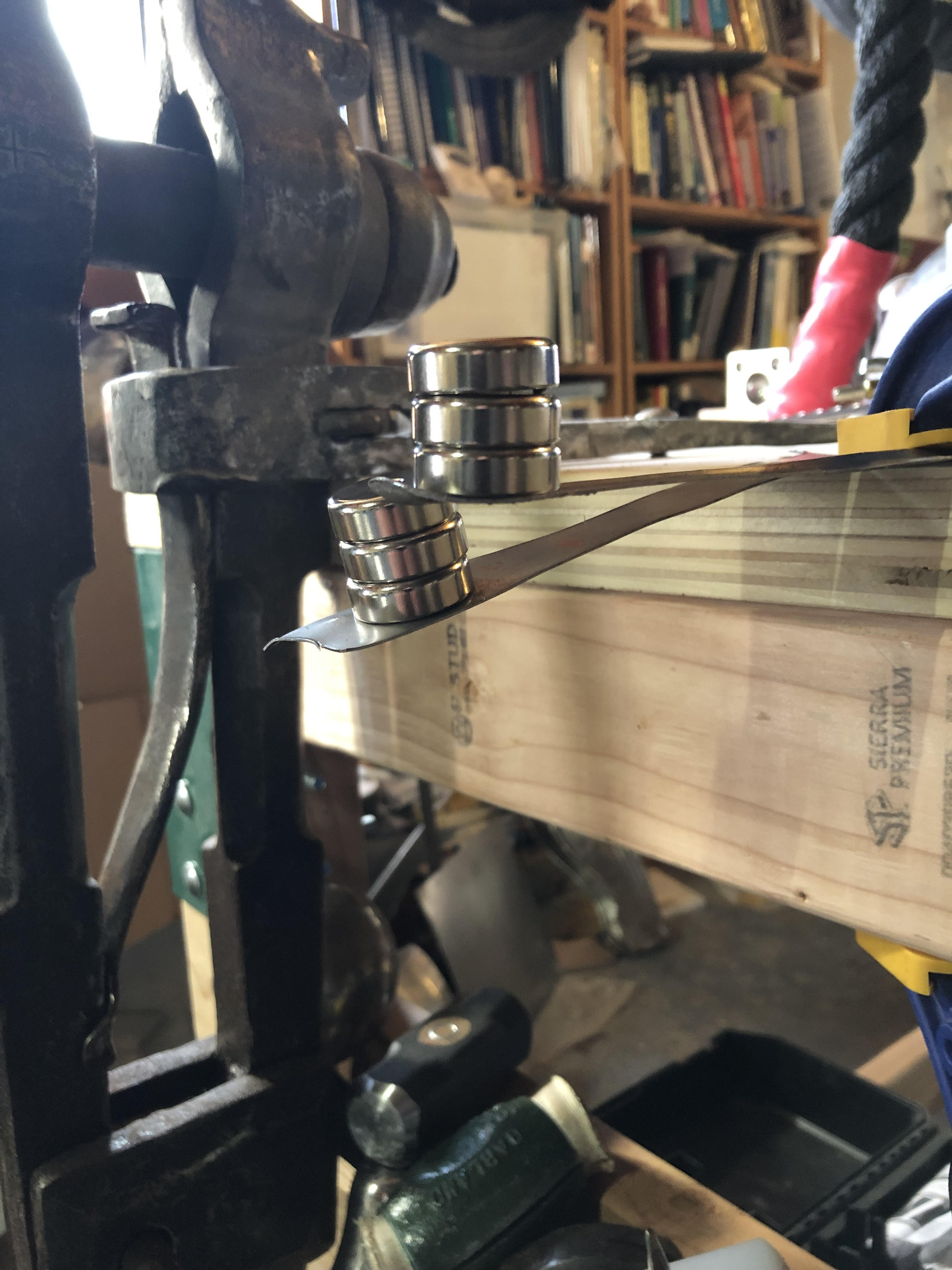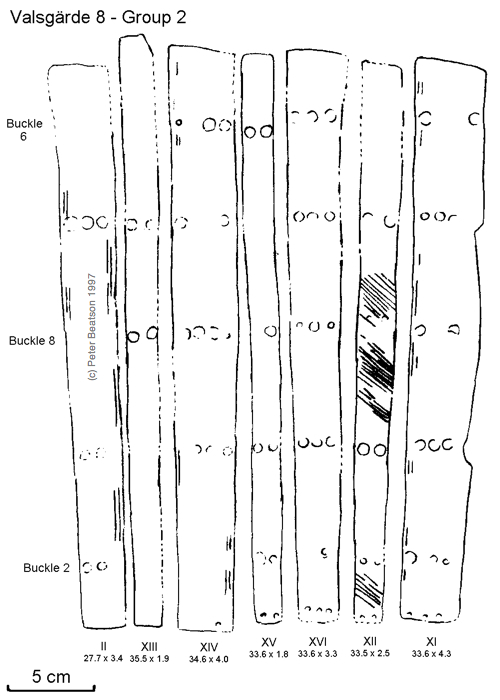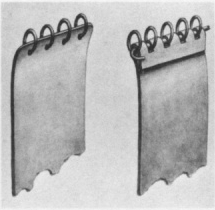Valsgärde 8 Splinted Vambrace
The goal of this project was to create a piece of armor for the forearm that is functional and safe for SCA heavy combat and historically plausible for a Vendel era warrior. The splinted limb armor from Valsgärde Sweden 635-650 CE is an example that is frequently used by reenactors and it was used as the basis for this project.

The splints in my reproduction were cut from 18 gauge (1.2mm)4130 steel using a beverly shear. This is a modern alloy that has proven to hold up well to rattan and steel combat sports. Despite it’s low carbon content it can be heat treated providing durable protection with minimal weight. A flute running the length of the wider splints was stamped in with a blunted chisel and the ends near the wrist were curved out slightly as in some of the original pieces. While the flutes are not present in the Valsgärde find they add a great deal of strength to the final piece and an opportunity for decoration. After shaping and punching holes the slats were heat treated using a schedule suggested by Craig Nadler. Slats were heated to 1650-1700 degrees F in a propane kiln and then quenched in water. Tempering was completed in the kitchen oven; 550 degrees F for 30 minutes results in a hard but flexible material with a dark blue finish. The slats in the historical example were joined to thin (1.5 cm) leather strips with domed bronze nails. Here I substituted domed brass rivets for simplicity and added a washer to the back of each to make a more long lasting attachment with the strap.
| Vambrace as Worn Over Linen Padding | Bend Comparison |
|---|---|
 |
 |
| Slight bend near the wrist greatly increases comfort. | Example showing the deflection of a split with and without a flute. |
References:
- Arwidsson, G. (1939). Armour of the Vendel period. Acta Archaeologica 10, 31-59.
- Arwidsson, G. (1954). Valsgärde 8 (Die Gräberfunde von Valsgärde, II). Almqvist & Wiksell: Uppsala.
Splinted limb armour from Valsgärde, Uppland, Sweden.
Date: 635-650AD.
Find: Grave 8 - Richly furnished boat grave of a Migration Age Germanic warrior including a helmet, mail, splint armour, and equestrian equipment.
Description: The armour had been folded up and stored together in a wooden casket in the burial. A total of 21 iron splints and fragments of leather straps which originally connected them were found. The splints could be sorted into three groups of seven each, based on length and number of straps. Group 1 were the shortest (23.5 to 27.4 cm), and were riveted by 1 or 2 domed bronze nails to two thin straps (1.5 cm wide). Five splints were broad and tapered while the other two were narrow and more or less even width. Each was bent upward at the wide end while their narrow end is formed into a dragon-head with features outlined in slight relief, a small iron ring is inserted through each ‘nostril’. The wider splints are otherwise unembellished while the narrow ones are covered in cross-wise grooves.
Group 2 were 33-34 cm long, roughly rectangular with a slight taper and both ends slightly bent outward. There are four broad splints which have a pair of lines cut parallel to the edges, alternating with three narrower ones which are again marked with (diagonal) hatching. At the narrower end are from 2 to 4 holes for rings linking them to a mail garment. Though they all have five matching rows of 2, 3 or 4 bronze rivets, only the top, middle and bottom rows were functional, attaching them to three leather staps (1.2 to 1.6 cm width).
Group 3 is similar to Group 2, slightly longer (35.5 to 36.7 cm), and with a different attachment for the mail. The ends of each splint are rolled with notches cut for the rings. The mail is held in place with a piece of wire similar to the way mail is hung from some helmets. See Type-3 Attachments, Methods of Mail Suspension Used on Early Medieval European Helmets.
| Group 1 | Group 2 | Group 3 | Mail Attachment |
|---|---|---|---|
 |
 |
 |
 |